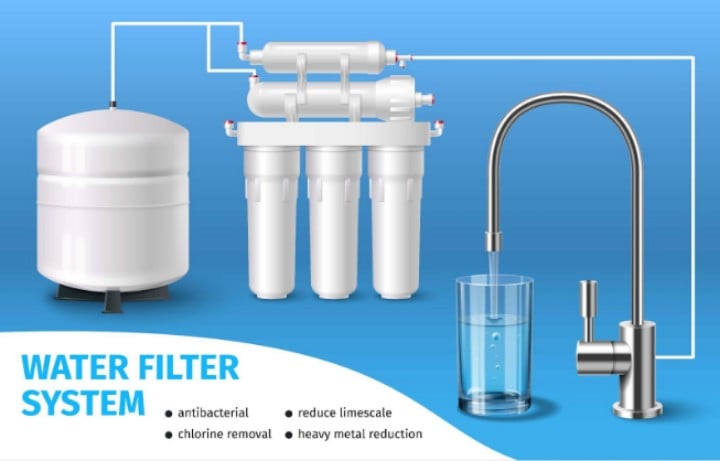
While clean tap water is a given for most Americans, millions still face annual exposure to contaminants. Sadly, it often takes a crisis to expose weaknesses in our water infrastructure, as seen in the enduring aftermath of Flint, Michigan’s lead pollution nine years later. Local residents continue to rely on bottled water for safety.
To address this issue, city officials now promote water filters. Among the options available, reverse osmosis (RO) systems are the most effective on the market. However, RO systems require regular maintenance, including the purchase and installation of a suitable RO replacement membrane. Neglecting checkups can lead to damage and unnecessary expenses.
In this blog, we’ll discuss the importance of regular maintenance for RO membranes and why staying on top of it is essential. So grab a glass of water and read on!
Understanding RO Membranes
Reverse osmosis (RO) technology is an incredibly efficient water filtration method that uses a semi-permeable membrane to eliminate up to 99% of impurities and contaminants. To understand how reverse osmosis membranes work, imagine pressurized water directed through a thin, dense film with minuscule pores.
These pores exclusively allow water molecules to pass through while blocking larger impurities such as dissolved salts, heavy metals, bacteria, viruses, pesticides, and other contaminants.
The purified water that successfully passes through this process is referred to as permeate. This permeate is collected and stored for consumption. On the other hand, the concentrated impurities and rejected substances, known as the reject or concentrate stream, are discharged from the system so that they do not accumulate inside.
Benefits of Using RO Membranes in Water Filtration
Here are some of the advantages of RO membranes vs. other types of water filtration membranes
Improved drinking water quality
One of the most significant advantages of RO membranes is the ability to produce high-quality drinking water that tastes better, has no odor, and is visually clear.
Contaminant and impurity reduction
This system effectively reduces contaminants like chlorine, fluoride, and nitrates, making the water safer to drink and preventing potential health issues caused by these substances.
Energy-efficient systems
The energy efficiency of RO membranes is another key advantage. These systems consume minimal energy during operation, making them environmentally friendly and reducing energy costs.
Easy maintenance
Reverse osmosis membrane filters can be easily cleaned and replaced. Troubleshooting common issues with RO membranes can be done by anyone. You don’t need to call an expert.
Versatile purification
A membrane filter for RO can adapt to various water sources, producing water suitable for different applications such as drinking, industrial processes, or irrigation.
The Significance of Regular Maintenance
Regular maintenance is crucial for the optimal performance and longevity of an RO system. Here’s why it’s necessary:
- Maintenance prevents clogging of filters, ensuring the membrane for RO system functions at its best, providing clean water.
- Regular maintenance prevents harmful substances from accumulating in the reverse osmosis membranes, maintaining water quality and preventing health risks.
- Proper maintenance reduces repair costs and extends the system’s lifespan.
To maintain an RO system, the following maintenance tasks should be performed:
- Replace the sediment filter every 12 months. This is what removes particles and sediment.
- Replace the carbon filter every 6-12 months. This device eliminates chlorine and chemicals.
- Do RO membrane replacement every 2-3 years. This is the key component that removes impurities.
- If you’re thinking of improving water taste with RO membranes, then you should replace the polishing carbon filter every 12 months. This is the granular activated carbon filter.
So, how often should reverse osmosis system maintenance happen?
The frequency of maintenance and replacement of RO membranes may vary based on factors such as water quality, usage, and manufacturer recommendations, however, as a general guideline most of the filters on your system need to be replaced at least every 3-12 months, and as already pointed out, you should replace your core membrane for reverse osmosis at least once every 2 years.
Conclusion
When it comes to achieving pristine drinking water, the secret lies in regular inspections, maintenance, and selecting the right RO membrane for your system.
You can find some of the top brands of RO membranes from online retailers like Filterway.
Be sure you buy only quality replacement membrane reverse osmosis from reliable stores so that you and your family can enjoy the sheer delight of pure, refreshing hydration.
We hope you found this blog post on Unveiling the Secret to Pristine Drinking Water: The Vitality of Regular Maintenance for RO Membranes, useful. Be sure to check out our post on Which is the Best Water Filter to Remove Nitrates? for more great tips!
Have Experience in the Moving Industry? Want an Additional Income Stream? Work With All Around Moving!
Partner with us, All Around Moving Company, and we’ll help you profit. Click here to learn more.





